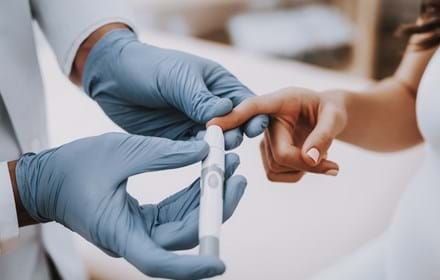
Hypo risk for people with type 1 diabetes highlighted in recent poll
Researchers report “alarming” figures about the frequency of hypoglycaemia in people living with type 1 diabetes.
Hypoglycaemia, or “hypos” is a complication of type 1 diabetes where blood glucose levels reach a low level.
According to a survey published to mark World Diabetes Day (14th November) more than one in four people living with type 1 diabetes experience dangerously low blood glucose levels at least once every three days
The Living with Diabetes Survey 2023 report, compiled by Afon Technology, found that 28% of the 305 people with type 1 diabetes surveyed had 10 or more hypo episodes every month.
A total of 599 people with both type 1 and type 2 diabetes took part in the questionnaire, which reported that 61.5% of the participants use a continuous glucose monitor (CGM) or flash technology to monitor their blood glucose levels.
The responses found that some people do not use a CGM because they are too expensive, painful, not available in their country and can be inaccurate. In addition, some respondents said they are not using a CGM because they are waiting to access a non-invasive device.
Sabih Chaudhry, Chief Executive for Afon Technology, said: “Today we unveil a critical insight from our recent survey, revealing 27.9% of people with type 1 diabetes experience at least one hypoglycaemic episode every week at least once every three days. This is alarming and a clear signal that we need to revolutionise diabetes management.”
If left untreated, severe cases of hypoglycaemia – when blood sugar levels fall below 4mmol/L – can be dangerous. Symptoms of a hypo include feeling hungry, dizzy, weak and confused, as well as shaking, sweating, tingling lips and blurred vision.


Images: (left) Sabih Chaudhry (fourth from left) with the Afon Technology team
(Right) How many hypos do you have in the average month? - Type 1 diabetes
A mild hypo can be treated through eating or drinking 15 to 20 grams of fast-acting carbohydrates such as glucose tablets, sweets, sugary fizzy drinks or fruit juice.
Some people with diabetes may also need to take 15 to 20 grams of slower acting carbohydrates if the next meal is not due, the charity has reported.
Scientists at the Monmouthshire-based technology firm are working to create the world's first non-invasive wearable blood glucose sensor, aiming to to transform the lives of people living with diabetes by completely removing needles from the process of monitoring blood sugar levels.
The sensor sits on the inside of your wrist and uses Bluetooth technology to send real-time information to a companion app which will display your blood glucose trends and alert you to high/low glucose levels as well as personal health trends.
Sabih added: “At Afon Technology, we believe in the transformative power of continuous glucose monitoring. Our mission is to change the lives of those with diabetes, and we are on the cusp of making needles a relic of the past in blood sugar monitoring. By detecting low sugar levels swiftly and accurately, we hope to turn the tide against hypos and offer a brighter, needle-free future for people managing diabetes.”
Read more about type 1 diabetes
Recent News


